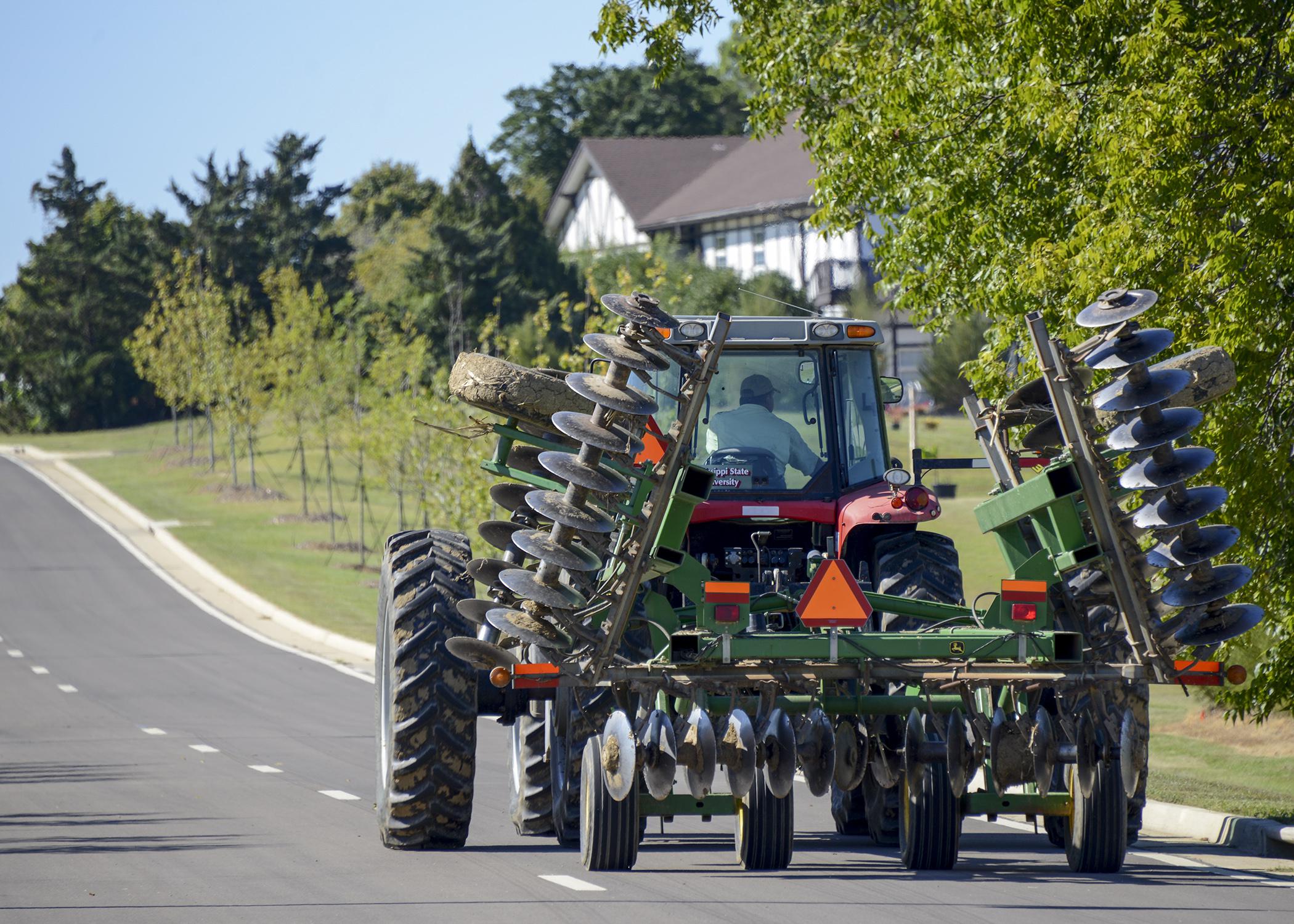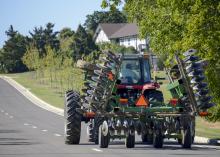Information Possibly Outdated
The information presented on this page was originally released on September 24, 2014. It may not be outdated, but please search our site for more current information. If you plan to quote or reference this information in a publication, please check with the Extension specialist or author before proceeding.
Yield on roadways during harvest time
MISSISSIPPI STATE -- This week marks National Farm Safety and Health Week and it is the perfect time to recognize the dangers of harvest equipment on the highways.
According to the U.S. Department of Transportation, 70 percent of traffic fatalities in Mississippi occur on rural roads. In addition to being more common, crashes on rural roads tend to be more severe and are more likely to result in death. Farm equipment can be a hazard rural roads any time of year, but harvest time means increased traffic.
Jason Ward, Mississippi State University’s assistant Extension professor in agricultural and biological engineering, says it is critical for drivers to be aware of potential risks.
“Drivers need to consider several factors when sharing the road with farmers transporting harvest equipment,” Ward said. “In particular, drivers need to realize tractors and other equipment travel at very slow speeds. When a driver is traveling 60 miles per hour, they need to realize that tractor they are quickly approaching is only doing about 25 mph. That difference in speed can get motorists into trouble.”
Ward suggested drivers slow down when they approach a vehicle with a slow-moving-vehicle, or SMV, sign on display. All tractors and farm equipment traveling on public roads are required to display an SMV sign.
“It’s important to take into account the size and mobility of the equipment as well,” Ward said. “Be aware that operators may require more time to maneuver a larger vehicle. It may also be difficult for them to brake quickly. Visibility might not be as good. Remember, if you can’t see the vehicle’s mirrors, the operator can’t see you.”
Ward also recommended using extra caution when attempting to pass a farm vehicle.
“You will likely need to allow for extra clearance and account for escort vehicles.” Ward said. “Oftentimes, it’s simply wiser to be patient and wait for the farm vehicle to have an opportunity to pull over so you can pass. Getting to your destination safely is more important than getting there quickly. In the long run, those few miles won’t make much of a difference in your drive time.”
Ted Gordon, risk management and loss control manager with the university’s Mississippi Agricultural and Forestry Experiment Station, emphasized the importance of farmers taking extra caution when transporting heavy equipment during harvest time.
“Inspect all equipment before traveling on a public road; check tires, brakes, lighting systems and safety chains,” Gordon said. “Make sure equipment is in good working order and that every operator observes proper safety measures at all times.”
Gordon said farmers should be sure equipment is safely secured to truck beds and trailers and towed at proper speeds. He also stressed the importance of one rider per seat in all circumstances.
“Self-propelled equipment like combines and corn pickers are equipped from the factory with one seat, unless it is ordered with a buddy seat for training,” Gordon said. “Our MAFES policy is always ‘one seat-one rider.’ If a buddy seat is provided, the trainee would not need to ride on a public road.”
If motorists and farmers alike take a little extra time and caution on the roadways this time of year, the harvest season will be safer.




